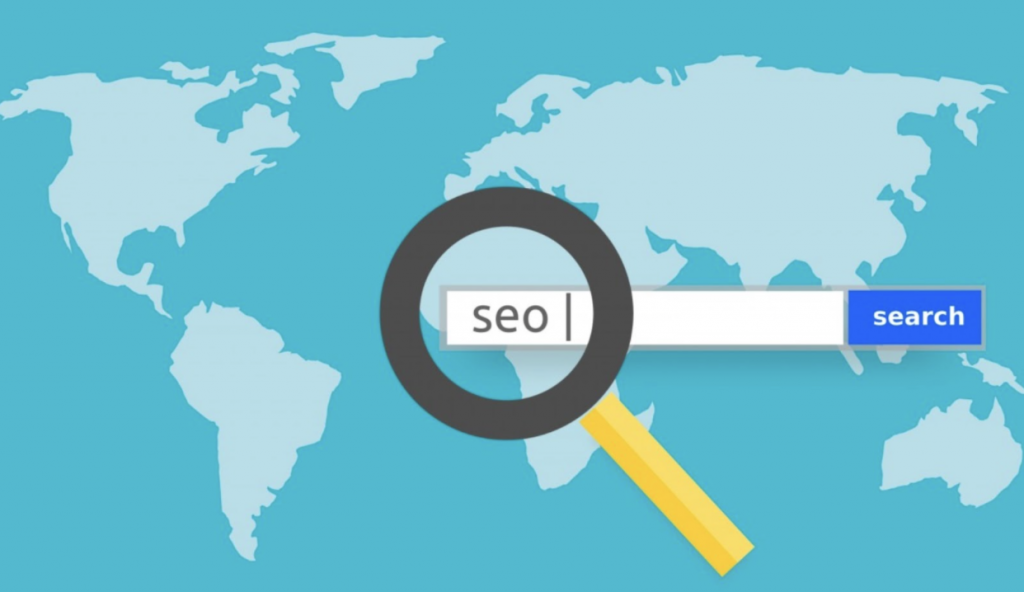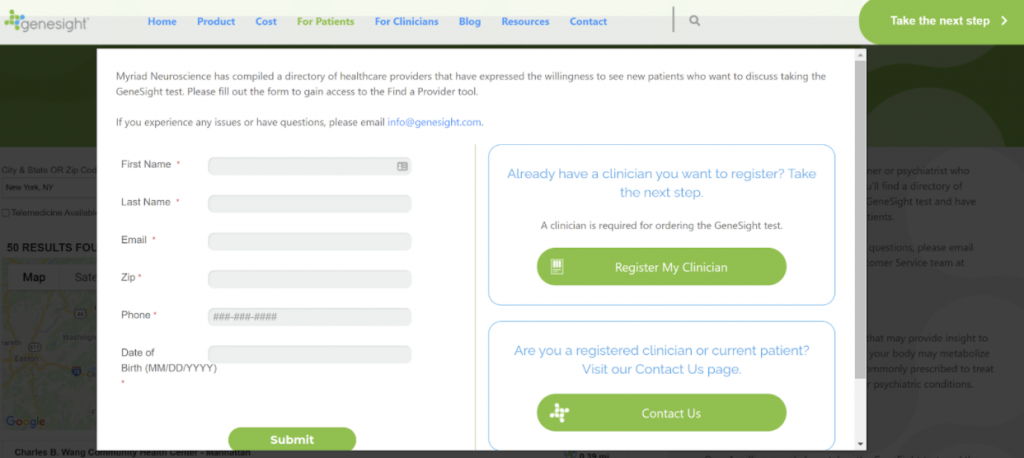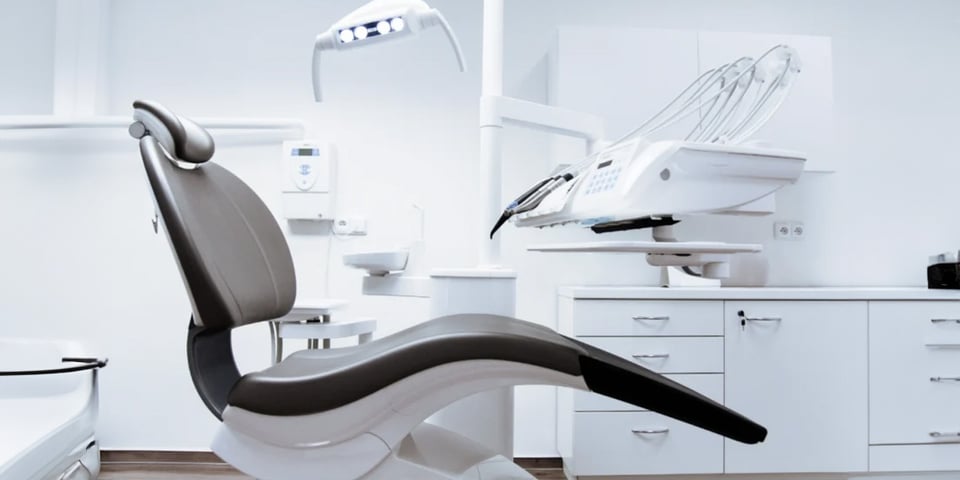How can you sell more medical devices, more of the time? Specifically, how solid is your marketing strategy in driving sales?
It’s a question that needs answering if you want to maintain a competitive advantage. The medical device market, valued at $457 billion in 2020 and projected to reach nearly $604 billion by 2023, is full of serious players looking to grow their share of the market.
Fortunately, you can do this by leveraging today’s digital tools. It’s not just about having a website. It’s about using smart marketing and lead generation techniques on the internet to drive doctors and other buyers towards your sales funnel.
Whether you’re a maker of durable medical equipment (DME), diagnostic devices, or treatment and life support equipment, these online marketing strategies are certain to empower your sales reps, move more product, and boost your bottom line.
1. Use Advanced Keyword Research to Find “Hidden Gem” Search Queries
To be found online, it’s key to create content around keywords that your prospects use in search engines.
Up to 64% of marketers are actively investing time in search engine optimization (SEO). In the medical device field, more and more manufacturers are seeing its benefits in sales. It’s simple: if you leverage keyword-optimized content properly, you will drive ready-to-buy organic traffic to your website.
Now that many brands have caught on, you’ll need to know a few tricks to successfully use SEO as a medical device marketing strategy.
Look Up Q&A Sites and Forums Your Prospects Frequent
On Quora and other websites, some of your ideal customers are likely asking questions about relevant medical devices or treatments. Your reps can and should be there to share helpful insights.
Not only can you answer those questions meaningfully and establish thought-leadership, you can gain inspiration for more SEO content creation.
Optimized blog posts and articles that enter the conversation in your prospects’ heads are most likely to gain traffic and win prime search real estate…and you can learn what to write about by surveying the market and listening to their questions.
Do Competitor Research
Study the content other medical device and equipment makers are ranking for in search. Type in words and phrases that relate to your products, and see what content is earning the highest spots in Google.
BuzzSumo is often a good outlet for finding widely-shared content you can model your own after. You might also look at LinkedIn or Medium articles put out by other manufacturers.
See any opportunities they’re not taking advantage of, or instances where you can create better content than they have? Jump on them.

Focus on High-Commercial Intent and Solution-Oriented Keyphrases
Doctors may search online for specific medical equipment. Patients, on the other hand, are searching for info on health conditions.
The best approach? Appeal to both types of prospect.
To reach patients, create content around words and phrases related to the medical equipment you make. To reach physicians, use SEO tools like Ahrefs, Semrush, and the Google Ads Keyword Planner Tool to search conditions and procedures associated with your devices.
For example, let’s look at a durable medical equipment marketing situation. If you’re a maker of CPAP devices for patients with sleep apnea and you want to reach doctors who treat this condition, you might create SEO content around the keyphrase “wholesale CPAP equipment.”
For patients, you might also write articles around the phrases “how to treat sleep apnea” and “how to use a CPAP machine.”
Make sure you have enough authoritative SEO content to appeal to every audience you sell to, and you’ll find more of the right prospects landing on your site.
2. Use Google Search Ads to Target High-Value Keywords
For medical equipment marketing, a perfect complement to SEO is Google Search Ads. Google estimates that for every $1 spent on Search Ads, businesses earn back $8 in revenue from both Ads and Search.
As part of search engine marketing (SEM), Search Ads are great for creating a more immediate impact on your lead generation and sales. These are the text ads you see at the top of the Google search results, and they’re easily identifiable by the word “Ad” next to the listing.
Use them to make your offer the first thing customers see when they’re searching Google for a particular device.

To win with Search Ads, you’ll want to target high-value keywords and phrases that your prospects will use when searching online. Once you identify relevant long-tail keywords with a high search volume, create ads that highlight those terms to start gaining high-quality traffic.
Just like with SEO content, you’ll want to use a mix of keywords to appeal to different buyer personas. Commercial intent keyphrases focused on a particular product might include:
- LASIK surgical machines
- Blood glucometer
- Infusion pumps
Why these keywords? They relate particularly to B2B users of medical devices who are ready to make a purchase, such as physicians, clinics, and hospitals.
If you’re trying to attract consumers, you might also write some ads around solution-based keyphrases, like:
- LASIK procedures
- Diabetes home management
- IV fluid therapy
With this kind of high-intent language in your ads, you’ll attract exactly those prospects who are looking to buy your products.
3. Use a Store Locator That’s Easy to Navigate and Generates Leads
Your online assets, like your website and Google Search Ads, should be working for you 24/7. Another digital asset that should never sleep? Your locator page.
Your locator, which shows doctors, patients, clinics, and other prospects where to obtain your products, can do more than just list retailers and distributors. As part of a solid medical equipment marketing strategy, it should actually generate leads for you.
More specifically, your locator should encourage prospects to submit inquiries while leaving their name, phone number, and email address with you. Not every locator software enables this, but the Bullseye Locator Software does.

Bullseye will help you gather qualified leads and directly support increased sales. It achieves this because:
- It’s built with lead generation in mind, enabling you to follow up with prospects via email.
- It lets you see which retail locations are driving the most device sales, enabling you to give those locations more upfront visibility, as well as display specific promotions and special offers.
- It integrates with Salesforce, HubSpot, and other leading customer relationship management (CRM) platforms, allowing you to use sales software you already have to pursue promising leads.
For more medical equipment and device sales, Bullseye is an effective tool. When your web visitors want to know where to buy your products, a Bullseye-powered locator is a sure way to capture them as leads and ensure they’re on a path towards a purchase.
4. Use a Locator to Intercept Patient Demand
Locators have yet another important application for manufacturers. You can use them to direct patients who need your products to doctors who provide them.
That is, it’s possible to intercept patient demand with a locator that specifically shows providers you’ve partnered with. At the same time, you can provide patients with content to share with doctors, building advocacy for your products.
This closes the sales loop and is a powerful way to match your network of providers with ideal patients. As you bring clinicians more business, you’re creating a self-sustaining ecosystem that will boost your market share and bottom line.
How might this strategy look? Let’s go back to the sleep apnea example.
Imagine that a patient types the words “how to treat sleep apnea” into Google. As a manufacturer of CPAP machines, you happen to have some SEO content ranking highly for that keyphrase.
The patient clicks on it, reads your helpful article, and clicks on a link you have at the end (perhaps with optimized anchor text, like “sleep apnea treatments near me”) leading to your provider locator. In the locator, they’ll find local doctors who only use your CPAP products.
GeneSight, which makes tests that assess genetic compatibility with specific medications, uses this exact method effectively.
Patients might discover the GeneSight website by searching certain terms in Google, and landing on optimized content. That content ties into the benefits of GeneSight’s tests, and contains a link to their provider locator. Once there, users will see a popup requiring personal contact info in order to continue.

Users can then find the closest doctor who specifically uses the GeneSight test.
GeneSight even has other content on their website that enables patients to advocate for the benefits of a GeneSight test, such as a doctor’s discussion guide.
This whole setup not only generates quality patient leads, but also makes for a great user experience. Web users who personally need a GeneSight test waste no time here with a more generalized provider locator. They’ll find the right local doctors, right away
Capturing patient demand like this pulls together a great web user experience, smart SEO, and a powerful locator into a full “stack” that opens up a stream of sales.
5. Use Video Marketing to Demonstrate Medical Device Benefits
Video is one of the most compelling online marketing and sales tools for any business. According to Wyzowl, 93% of marketers in 2021 said that video is an important part of their marketing strategy, a percentage that’s been growing significantly year over year.
Video is especially key for bustling B2B industries, and it’s a very smart medical device marketing strategy. It makes a powerful, memorable impact that often speaks much louder than written words.
If doctors and other healthcare professionals can see your product’s value through videos showing features, clinical applications, and benefits, you’re likely to boost sales.

Create videos that provide helpful info, show how to use your products, and discuss important news in your industry. These can position your organization as a thought leader, increasing trust and sales as a result. It’s good to have other types of high-value videos as well, including webinars, PowerPoint presentations, animated explainer videos, and customer testimonials.
Feature them in various places on the web, such as:
- Your website
- Organic social media posts, such as on LinkedIn and Facebook
- Paid social media advertising
- Video websites, such as YouTube and Vimeo
The higher-quality the production, the better. Invest in videos that show off your brand promise, while moving customers at every step of the buyer journey closer to the sale.
With an organized video marketing plan and enough patience, you’ll soon see the returns, and gain an advantage over competitors who are slacking off in their online approach.
6. Bring Doctors Back to Your Website with Remarketing
Doctors who visit your site are likely to be interested in buying your products — but once they leave, you’ve lost them forever.
How can you get them back? Remarketing. That is, the simple process of reaching prospects who have seen your ads in the past. This tactic can drive up to a 50% increase in conversions, while a single-touch search campaign converts as little as 2%.
This happens because prospects often need to be exposed to a brand’s messaging repeatedly before they make a purchase. In particular, doctors and clinic managers are busy, and might need to see your ad several times to realize the benefits and buy.
Here are four very effective remarketing methods for medical device and equipment sales:
The Google Display Network
By defining conversion events in the Google Ads dashboard, you can let Google know what kind of website action is important to you, whether it’s signing up for a webinar or a free demo. Then, you can create image-based ads that reach website visitors who left your site without converting.
These ads will “follow” users around the web, reminding them of your offers. Be sure to test different ads over a period of time (several weeks to a few months) to determine a “winning” ad that effectively brings doctors back to make purchases.
Remarketing Lists for Search Ads (RLSAs)
With Google Search Ads, you can use predefined audience lists to show ads to prospects. Remarketing lists, in particular, are specific audiences you define — in this case, past visitors of your site.
Once you’ve defined such a list within your Google Ads dashboard, you can create a series of text-based ads designed to regain those prospects’ attention.
Facebook Custom Audiences
The Facebook Ads platform boasts a powerful feature: Custom Audiences. You can define audiences from those who have interacted and engaged with your ads, liked your page, or completed any number of other actions within your Facebook presence or website.
Try designing ads that call out those who are familiar with your previous messages, and watch as your conversions rise.
Email Retargeting
Don’t miss out on the power of remarketing via email lead nurturing.
Through audience segmentation, you can create a special list of prospects who might have visited your website and indicated an interest in your products, but never took the next step towards making a purchase.
Following up with them via email, with specific reminders and helpful information, is a powerful way to increase sales.
Note: The Bullseye platform, through its robust API, integrates seamlessly with leading email marketing software and makes this process easy.

Use These Marketing Methods to Power Your Medical Equipment and Device Sales
For diagnostic, surgical, and durable medical equipment marketing — not to mention other types of medical devices — modern solutions are needed.
That means leveraging the best practices for reaching out to prospects online. Medical device marketing strategies that work include a mix of remarketing, search ads, smart SEO content, and quality video content. Don’t use just one of these techniques. Use all of them to make your brand stand out.
The key ingredient that pulls it all together? A great locator. The best software possible for creating locators is Bullseye.
Bullseye powers locators that capture patient and provider leads you can remarket to over time. They’re the perfect complement to a strong online presence. By using Bullseye-built locators and employing marketing best practices, your device and equipment sales will be on the rise in no time.
Interested in seeing just how powerful a premium locator can be for your sales? Schedule a free assessment of your current locator page today.




